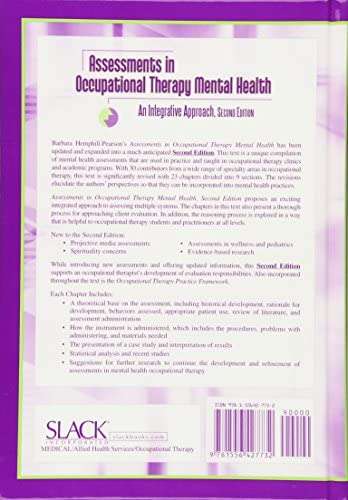Delilah Rumburg
For more than two decades, I’ve dedicated my life to eliminating sexual violence and helping victims of abuse find help, hope and healing in the wake of tremendous trauma. I’ve cried with survivors and cheered their triumphs.
I recently retired as the Chief Executive Officer of the Pennsylvania Coalition Against Rape and National Sexual Violence Resource Center.
My time as the leader of the oldest anti-sexual violence coalition in the country provided opportunities to make a difference in so many lives.
I’ve taken part in the Task Forces on Child Protection, which worked to create recommendations to the General Assembly of Pennsylvania and traveled across the globe with the Department of Defense—including Iraq, Kuwait, South Korea, and parts of Europe—to train soldier and learn more about how our military can work better to prevent sexual abuse in the field.
More:MeToo? Guess it doesn’t apply to Big Ben (column)
We championed changes in state and federal legislation during my time that improved statutes of limitations for child sexual abuse survivors—we have more work to do there, we know– the Violence Against Women Act, which dramatically changed the approach we took in our day-to-day work from reactive to proactive and in 2014 President Barack Obama signed a Presidential Memorandum establishing a White House Task Force to Protect Students from Sexual Assault; we helped frame that work.
We launched the National Sexual Violence Resource Center, which is now the largest collection of sexual violence-related resources in the world, in 2000, formed strategic partnerships with the National Football League and Uber and raised more than one million dollars to fund child sexual abuse prevention efforts through the Vision of Hope Gala & Auction.
And we collaborated with the California Coalition Against Sexual Assault and the National Alliance to End Sexual Violence to form Raliance with a bold mission to end sexual violence in one generation–the clock is ticking!
These are not solely my accomplishments. We did these things together—a dedicated and talented staff, generous donors, allies and legislators who understood the issues affecting their communities and sought meaningful change.
While the accomplishments are many, there is still work to be done. And I’m excited to see a new generation connect to the issue and re-energize our resolve to end sexual violence.
I’ve learned through my experiences that monumental moments like the one we’re in right now in the wake of the #metoo movement don’t happen often. We must take advantage.
More:York photographer: #MeToo is a conversation for us all
So I ask each of you today to carry this momentum to real, long-lasting change. York County residents, I know you will be up for the challenge. Why? Because I’ve been a member of your community for decades and I’ve seen first-hand your generosity toward sexual abuse and domestic violence-related issues.
Here are five steps to help:
- Believe survivors when they share their story. Sounds simple. But too often victims must defend their outfit, behaviors and even the amount of time they took to come forward if they decide to share their traumatic experience at all. What we often don’t do—which we should—is hold the abuser accountable for their actions.
- Learn about sexual violence and start conversations with friends and family. Start with the basics and work your way up. There are a lot of resources available at pcar.org and we even have an online campus with free courses!
- Promote respect, safety and equality in your everyday actions. This can be as simple as asking a friend not to make hurtful comments or jokes about rape, teaching your kids healthy boundaries or always asking for consent with your partner.
- Invest now in the prevention of sexual harassment and abuse. Help to create a work environment in which current employees and all those who will enter the workforce in the future can share their talents without fear of sexual harassment. If you see harassment, step in and say something. If you’re an employer, PCAR can help you train your staff and ensure that proper policies and procedures are in place.
- Make a donation to support the work of PCAR and your local rape crisis center. We rely on your support to invest in help, hope and healing for survivors and prevention efforts to create a future free from sexual abuse.
Together, we can end sexual violence.
Delilah Rumburg recently retired as head of the Pennsylvania Coalition Against Rape and National Sexual Violence Resource Center.
The only person responsible for committing sexual assault is a perpetrator, but all of us have the ability to look out for each other’s safety. Whether it’s giving someone a safe ride home from a party or directly confronting a person who is engaging in threatening behavior, anyone can help prevent sexual violence.
What is a bystander?
A bystander is a person who is present when an event takes place but isn’t directly involved. Bystanders might be present when sexual assault or abuse occurs—or they could witness the circumstances that lead up to these crimes.
On average there are over 293,000 victims (age 12 or older) of rape and sexual assault each year in the U.S. The majority of these crimes are committed by someone the victim knows. Given these circumstances, it’s important to recognize the role bystanders can play in preventing crimes like sexual assault.
What can I do to prevent sexual assault?
You may have heard the term “bystander intervention” to describe a situation where someone who isn’t directly involved steps in to change the outcome. Stepping in may give the person you’re concerned about a chance to get to a safe place or leave the situation. You don’t have to be a hero or even stand out from the crowd to make a big difference in someone’s life. Take steps to protect someone who may be at risk in a way that fits your comfort level.
Whether you’re taking home a friend who has had too much to drink, explaining that a rape joke isn’t funny, or getting security involved when someone is behaving aggressively, choosing to step in can affect the way those around you think about and respond to sexual violence.
Why don’t people help more often?
It’s not always easy to step in, even if you know it’s the right thing to do. Some common reasons bystanders remain on the sidelines include:
- “I don’t know what to do or what to say.”
- “I don’t want to cause a scene.”
- “It’s not my business.”
- “I don’t want my friend to be mad at me.”
- “I’m sure someone else will step in.”
It’s okay to have these thoughts, but it’s important to realize that your actions can have a big impact. In many situations, bystanders have the opportunity to prevent crimes like sexual assault from happening in the first place.
Your actions matter
Whether or not you were able to change the outcome of the situation, by stepping in you are helping change the way people think about their roles in preventing sexual violence. If you suspect that someone you know has been sexually assaulted, there are steps you can take to support that person.
- Learn more about steps you can take to prevent a sexual assault and show you C.A.R.E.
- Identify ways to help someone you care about.
- Learn more about how to respond when someone discloses sexual assault or abuse.
To speak with someone who is trained to help, call the National Sexual Assault Hotline at 800.656.HOPE (4673) or chat online at online.rainn.org
We teach our young children all sorts of ways to keep themselves safe. We teach them to watch the hot stove, we teach them to look both ways before they cross the street. But, more often than not, body safety is not taught until much older — until sometimes, it is too late. Research conducted by the Centers for Disease Control (CDC) estimates that approximately 1 in 6 boys and 1 in 4 girls are sexually abused before the age of 18. You want to hear something even scarier? According to the US Department of Justice (nsopw.org) only 10% of perpetrators were strangers to the child and 23% of the perpetrators were children themselves!
These statistics do not surprise me. In my practice I meet children on a weekly basis who have been victims of sexual abuse. Many of them are under five years old. Almost all of them knew their perpetrator and more often than not, it is another kid!
Parents will frequently tell me that they didn’t think this could happen to them. That they never leave their children with strangers. That they always keep their children within their eyesight.
Do your children go on play dates? Do they go to daycare or pre-school? Do you have friends or family over to your house? Do they play at the neighbor’s house? The fact is, you cannot fully prevent the risk of your child being sexually abused.
The children I have worked with have come from good neighborhoods, and good homes, and go to really good schools. I have worked with children who have been sexually abused on play dates, sleepovers, in the classroom, on the playground, on the school bus, in their playroom and out in their backyard.
Now that I have officially scared you to death, let’s walk you back down from that cliff. We have to allow our children to go out into the world and interact with those around them. But we can arm them with knowledge that might save them from being victimized.
Parents do not always talk to their children about body safety early enough. They think kids are too young. It is too scary. But it is never too soon, and it doesn’t have to be a scary conversation. Here are things 10 things that could help your child be less vulnerable to sexual abuse:
1. Talk about body parts early
Name body parts and talk about them very early. Use proper names for body parts, or at least teach your child what the actual words are for their body parts. I can’t tell you how many young children I have worked with who have called their vagina their “bottom.” Feeling comfortable using these words and knowing what they mean can help a child talk clearly if something inappropriate has happened.
2. Teach them that some body parts are private
Tell your child that their private parts are called private because they are not for everyone to see. Explain that mommy and daddy can see them naked, but people outside of the home should only see them with their clothes on. Explain how their doctor can see them without their clothes because mommy and daddy are there with them and the doctor is checking their body.
3. Teach your child body boundaries
Tell your child matter-of-factly that no one should touch their private parts and that no one should ask them to touch somebody else’s private parts. Parents will often forget the second part of this sentence. Sexual abuse often begins with the perpetrator asking the child to touch them or someone else.
4. Tell your child that body secrets are not okay
Most perpetrators will tell the child to keep the abuse a secret. This can be done in a friendly way, such as, “I love playing with you, but if you tell anyone else what we played they won’t let me come over again.” Or it can be a threat: “This is our secret. If you tell anyone I will tell them it was your idea and you will get in big trouble!” Tell your kids that no matter what anyone tells them, body secrets are not okay and they should always tell you if someone tries to make them keep a body secret.
5. Tell your child that no one should take pictures of their private parts
This one is often missed by parents. There is a whole sick world out there of pedophiles who love to take and trade pictures of naked children online. This is an epidemic and it puts your child at risk. Tell your kids that no one should ever take pictures of their private parts.
6. Teach your child how to get out of scary or uncomfortable situations
Some children are uncomfortable with telling people “no”— especially older peers or adults. Tell them that it’s okay to tell an adult they have to leave, if something that feels wrong is happening, and help give them words to get out of uncomfortable situations. Tell your child that if someone wants to see or touch private parts they can tell them that they need to leave to go potty.
7. Have a code word your children can use when they feel unsafe or want to be picked up
As children get a little bit older, you can give them a code word that they can use when they are feeling unsafe. This can be used at home, when there are guests in the house or when they are on a play date or a sleepover.
8. Tell your children they will never be in trouble if they tell you a body secret
Children often tell me that they didn’t say anything because they thought they would get in trouble, too. This fear is often used by the perpetrator. Tell your child that no matter what happens, when they tell you anything about body safety or body secrets they will NEVER get in trouble.
9. Tell your child that a body touch might tickle or feel good
Many parents and books talk about “good touch and bad touch,” but this can be confusing because often these touches do not hurt or feel bad. I prefer the term “secret touch,” as it is a more accurate depiction of what might happen.
10. Tell your child that these rules apply even with people they know and even with another child
This is an important point to discuss with your child. When you ask a young child what a “bad guy” looks like they will most likely describe a cartoonish villain. You can say something like, “Mommy and daddy might touch your private parts when we are cleaning you or if you need cream — but no one else should touch you there. Not friends, not aunts or uncles, not teachers or coaches. Even if you like them or think they are in charge, they should still not touch your private parts.”
I am not naïve enough to believe that these discussions will absolutely prevent sexual abuse, but knowledge is a powerful deterrent, especially with young children who are targeted due to their innocence and ignorance in this area.
And one discussion is not enough. Find natural times to reiterate these messages, such as bath time or when they are running around naked. And please share this article with those you love and care about and help me spread the message of body safety!
This article first appeared on Natasha Daniels’ website, Anxious Toddlers.





